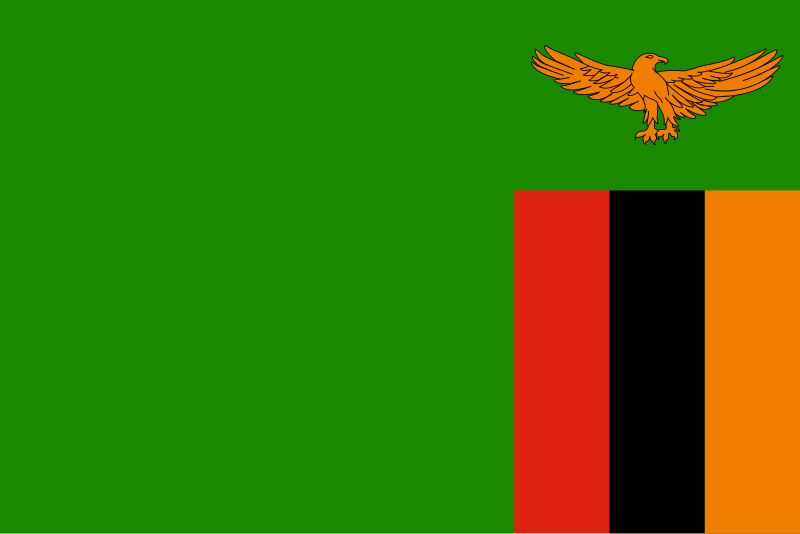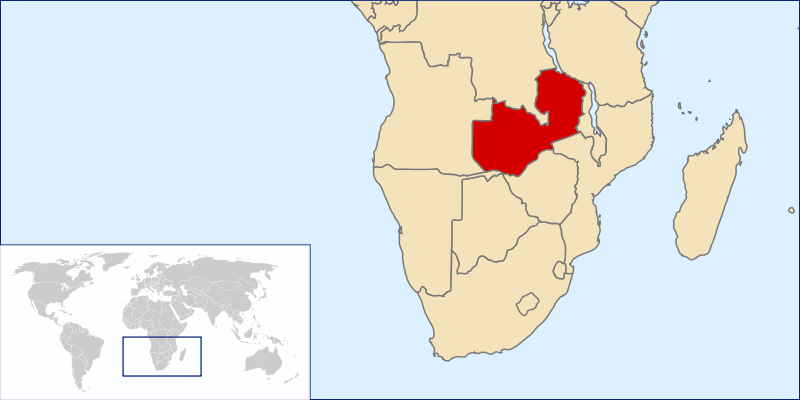 The Republic of Zambia (pronounced /ˈzæmbiə/) is a landlocked country in Southern Africa. The neighbouring countries are theDemocratic Republic of the Congo to the north, Tanzania to the north-east, Malawi to the east, Mozambique, Zimbabwe, Botswana, and Namibia to the south, and Angola to the west. The capital city is Lusaka, located in the south-central part of the country. The population is concentrated mainly around the capital Lusaka in the south and the Copperbelt to the northwest.
The Republic of Zambia (pronounced /ˈzæmbiə/) is a landlocked country in Southern Africa. The neighbouring countries are theDemocratic Republic of the Congo to the north, Tanzania to the north-east, Malawi to the east, Mozambique, Zimbabwe, Botswana, and Namibia to the south, and Angola to the west. The capital city is Lusaka, located in the south-central part of the country. The population is concentrated mainly around the capital Lusaka in the south and the Copperbelt to the northwest.
Zambia has been inhabited for thousands of years by hunter-gatherers and migrating tribes. After sporadic visits by European explorersstarting in the 18th century, Zambia was gradually claimed and occupied by the British as protectorate of Northern Rhodesia towards the end of the nineteenth century.
On 24 October 1964, the protectorate gained independence with the new name of Zambia, derived from the Zambezi river which flows through the country. Zambia was governed by president Kenneth Kaunda of the socialist United National Independence Party from 1964 until 1991. From 1991 to 2002, Zambia was governed by president Frederick Chiluba of the social-democratic Movement for Multi-Party Democracy. Today the country still faces steep challenges from poverty, tuberculosis and AIDS. An estimated 10% of adults are HIV positive. The per capita income is US $1150 (World Bank, 2008). Approximately 55 % of the population are reportedly living on less than $2 per day.
The culture of Zambia is mainly indigenous Bantu culture mixed with European influences. Prior to the establishment of modern Zambia, the indigenous people lived in independent tribes, each with their own ways of life. One of the results of the colonial era was the growth of urbanization. Different ethnic groups started living together in towns and cities, influencing each other as well as adopting a lot of the European culture. The original cultures have largely survived in the rural areas. In the urban setting there is a continuous integration and evolution of these cultures to produce what is now called “Zambian culture”
Popular traditional arts are mainly in pottery, basketry, stools, fabrics, mats, wooden carvings, ivory carvings, wire craft and copper crafts. Most Zambian traditional music is based on drums (and other percussion instruments) with a lot of singing and dancing. In the urban areas foreign genres of music are popular, in particular Congolese rumba, African-American music and Jamaican reggae. Several psychedelic rock artists emerged in the 1970s to create a genre known as “Zamrock,” including The Witch, The Peace, Amanaz & Chrissy Zebby Tembo, among others.

Notes from Wikipedia








